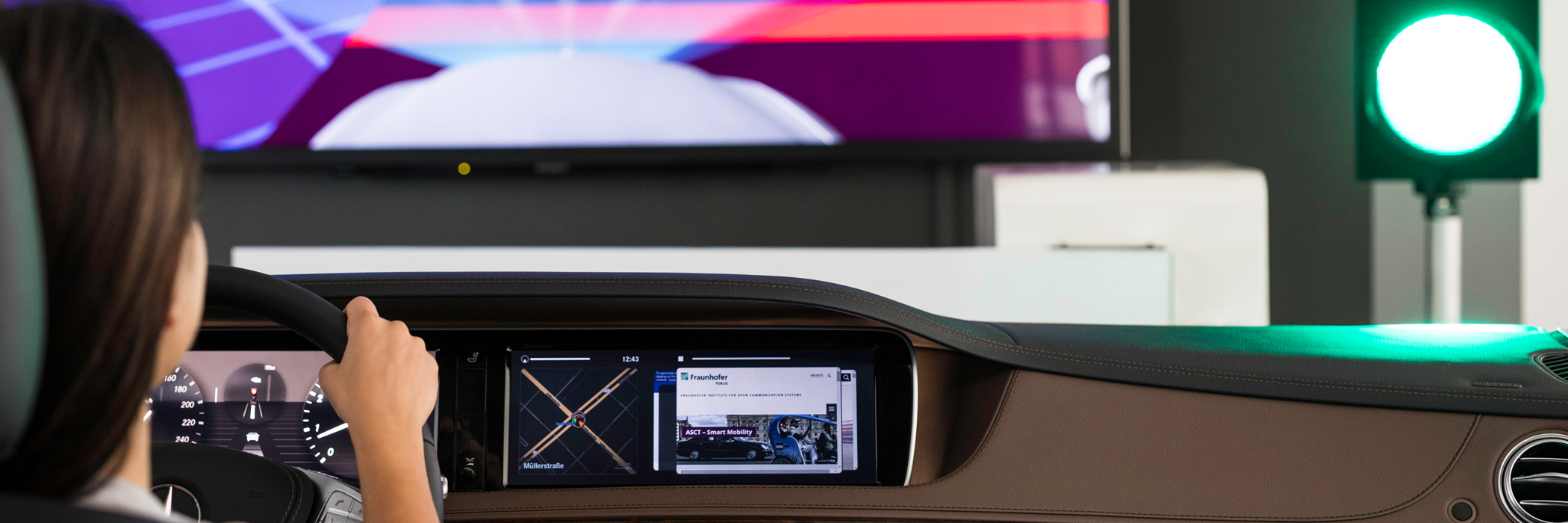The business unit smart mobility has a long-term expertise on both secure vehicle-to-X and vehicle-to-infrastructure communication. In our lab, the institute’s parking garage as well as different Berlin testbeds, we experiment with realistic simulations of vehicle-to-vehicle-based applications. Apart from our vehicle-oriented work, we do research on communication technologies such as 5G and Artificial Intelligence (AI) that enable autonomous driving. In addition to that, we road-test our simulated data under real life conditions using camera/lidar-equipped cars.
To cope with future mobility’s demands, it is not sufficient to solely take single vehicles into consideration. Researchers, therefore, work on a holistic-connected traffic planning that involves pedestrians, cyclists and public transportation. Only by this, a sustainable and user-centered future mobility can be ensured.
Offer:
- Consultancy and development services for connected and automated mobility
- Analysis and evaluation of large-scale, located data (big data)
- Localization and environmental perception via LIDAR and camera systems
- Validation of prototypes regarding standards compliance and their impact with the help of simulations
- Running of field tests
Target audience:
- Automotive companies
- Supplier
- Startup companies
- Federal ministries/authorities
- Traffic management offices

